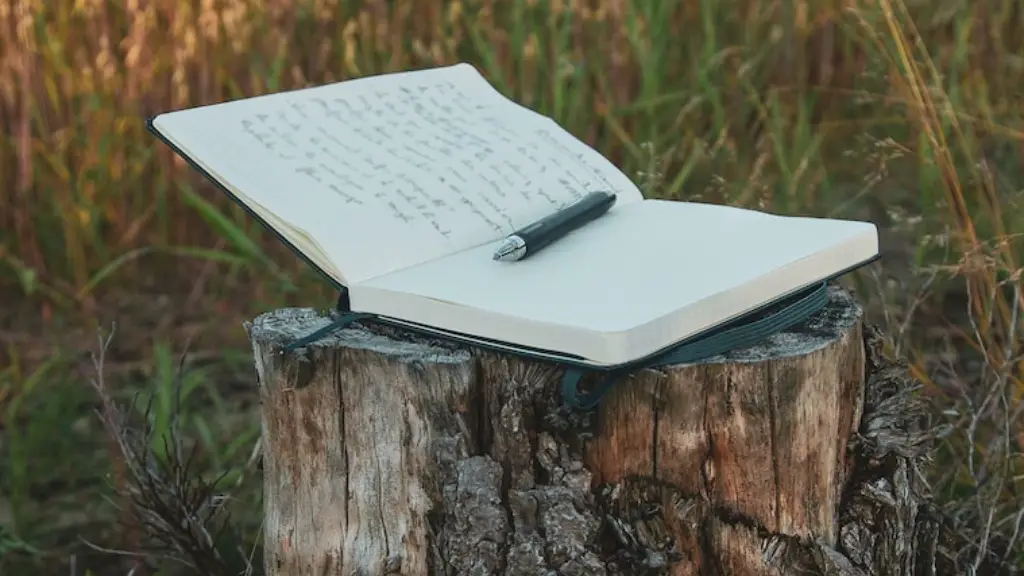Rhythmic Structure
Anglo-Saxon poetry relies heavily on structured-rhythm. While there is no set tempo, each line and stanza must have the same rhythm. This is typically achieved through the use of alliteration. Alliteration is when two or more words in the same line start with the same sound. It can range from two words to multiple words and is used to create emphasis and texture to the poem. Additionally, each line typically contains four stressed syllables with an unstressed syllable between them. This is known as alliterative meter. For example, in the poem “Beowulf”, the phrase “HIGE SCEAL þe heardra” uses alliteration to create emphasis and the unstressed and stressed syllable pattern to create alliterative meter.
Symbolism
Anglo-Saxon poetry relies heavily on symbolism. Symbols are used to convey a deeper meaning than words alone can. For example, in the poem “The Seafarer”, the ocean is used as a metaphor for one’s journey in life. The ocean is used to symbolize the various hardships and obstacles that one has to endure throughout their life. Additionally, symbols are used to create a connection between the reader and the poem. By using symbols that are meaningful to the reader, it not only engages the reader, but makes the poem more relatable to them.
Vocabulary
The vocabulary used in Anglo-Saxon poetry is typically old, archaic words. These words are meant to evoke feelings of nostalgia and grandeur. Additionally, some words may be unfamiliar to the reader. This can be used to create intrigue and even more of a connection between the reader and the poem, as the reader must take the time to look up unfamiliar words and really delve into the poem.
Imagery
Anglo-Saxon poetry relies heavily on imagery. Imagery is used to evoke particular emotions and create a vivid mental image in the reader’s mind. Imagery can range from personification and metaphors to similes and symbolism. For example, in the poem “The Wanderer” there is vivid imagery of a lone traveler roaming the cold, forgotten shore. This imagery is used to evoke a feeling of loneliness and despair that many people have felt in their lives.
Narrative
Anglo-Saxon poetry typically uses narrative as its main form of storytelling. Narrative poems are structured as a story, usually containing multiple characters or points of view. They may also involve a conflict or resolution. Narrative Anglo-Saxon poems often tell stories of courage, honor, and loyalty. For example, in the poem “Beowulf”, the protagonist, Beowulf, goes on a quest to slay the monster Grendel. The poem not only tells the story of his courageous feat, but also his honor and loyalty to his people.
Emotions
Anglo-Saxon poetry often evokes particular emotions in the reader. While some emotions are used to emphasize or illustrate the narrative or symbolism, some emotions are meant to move the reader. For example, in the poem “The Seafarer”, the narrator expresses his longing for home and his loneliness as he is away at sea. This evokes feelings of sorrow, nostalgia, and hope in the reader. Additionally, some emotions are used to create an emotional connection between reader and poem, as the reader is able to identify with the emotions being expressed in the poem.
Structure
Anglo-Saxon poetry is typically structured in four-line stanzas. This is known as a quatrain. A quatrain is a type of structure that is used to create unity and emphasis within the poem. Stanzas are typically developed in a particular order, with each line of a stanza being linked to the last. This helps to maintain the rhythm and focus of the poem. Additionally, Anglo-Saxon poems typically have a consistent rhyme pattern throughout. Rhyme is used to add texture to the poem and create a musical quality.
Modern Anglo-Saxon Poetry
Modern Anglo-Saxon poetry is a contemporary take on the Anglo-Saxon tradition. Modern Anglo-Saxon poetry is often more accessible to the general public. It may retain some of the symbolism, narrative structure, and emotion of its ancestor while utilizing more contemporary language. This makes it more relatable to the reader and allows them to connect with the poem on a more personal level.
How to write Anglo-Saxon poetry
Writing Anglo-Saxon poetry is a unique, but rewarding challenge. The first step is to familiarize oneself with alliteration, rhythm, and alliterative meter. Then, one must think of a story they would like to tell. This should have a central theme or a moral. Once that is done, it is time to begin writing. When writing poetry, one should focus on creating rhythm through alliteration and meter, adding symbolism to create a connection with the reader, and utilizing imagery to evoke emotions. Lastly, it is essential to keep in mind the structure of a quatrain and rhyme scheme.
Examples
One of the best ways to learn how to write Anglo-Saxon poetry is to read some examples. “Beowulf” is considered the most famous Anglo-Saxon poem, and one of the most important pieces of Old English literature. It is a great example of alliteration, meter, and symbolism. Other examples include “The Wanderer” and “The Seafarer”, two other poems from the Anglo-Saxon tradition.
Publishing
Once a poem is written, it is time to consider publishing. There are a variety of places to publish Anglo-Saxon poetry, from academic journals to popular magazines. Additionally, there are a variety of web and print publications dedicated solely to Anglo-Saxon poetry. These can be great places to get started.
Performance
Performance is an often overlooked aspect of Anglo-Saxon poetry. By performing a poem, the poet is able to add more dimension to their work. Performing a poem allows the audience to gain a better understanding of the work, as well as connect more intimately with the poem. Additionally, it allows the poet to create further emphasis and texture to their work.
Marketing
Marketing is also an important aspect of being a successful Anglo-Saxon poet. In order to reach a wider audience, poets should consider marketing their work. This could include writing press releases, setting up an online presence, or joining an Anglo-Saxon poetry group. Additionally, poets should consider submitting their work to literary magazines or other publishing outlets.
Conclusion
Writing Anglo-Saxon poetry is a rewarding and challenging endeavor that requires knowledge of traditional structure and style. It is important for poets to consider rhythm, symbolism, imagery, narrative, emotion, structure, and modern interpretations when writing a poem. Additionally, poets should also consider ways to publish and market their work. With patience and dedication, anyone can write a powerful Anglo-Saxon poem.



